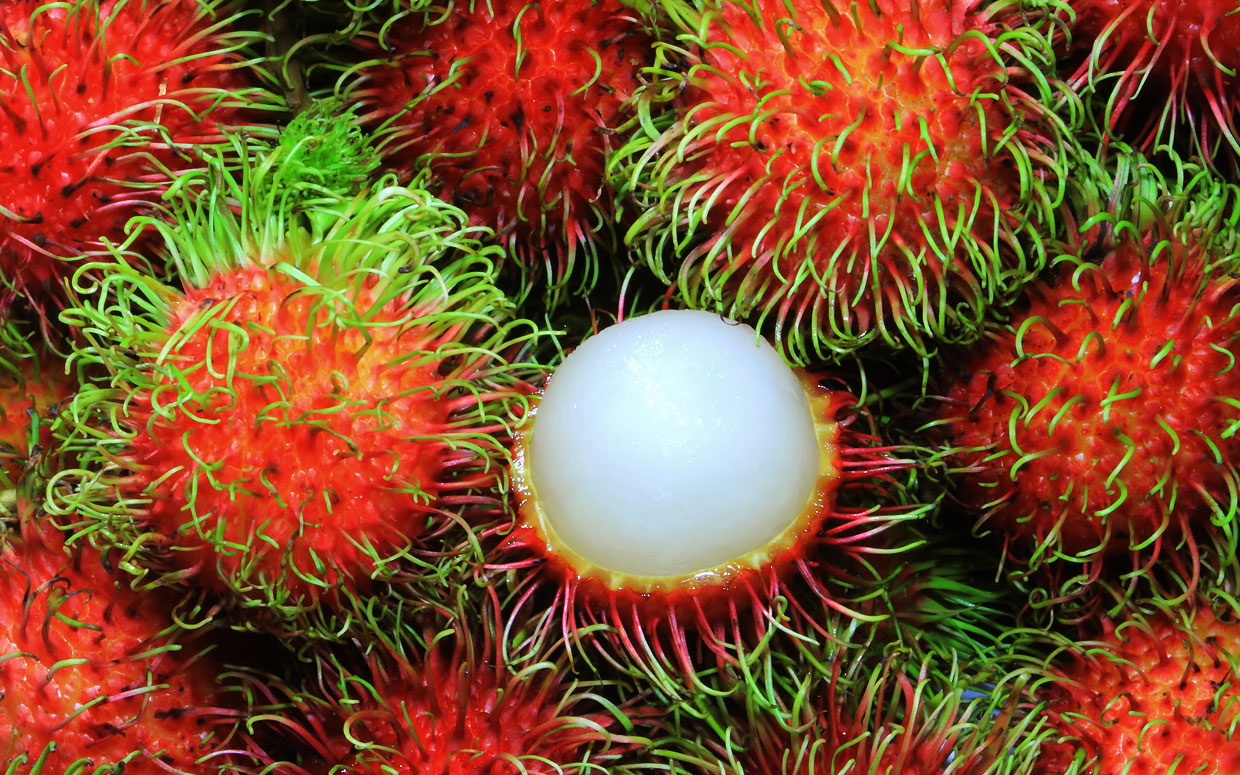
This post is about 12 exotic fruits with weird fruit names. These fruits are not too common also. We are sure, that you never heard the names of these fruits.
Star Fruit
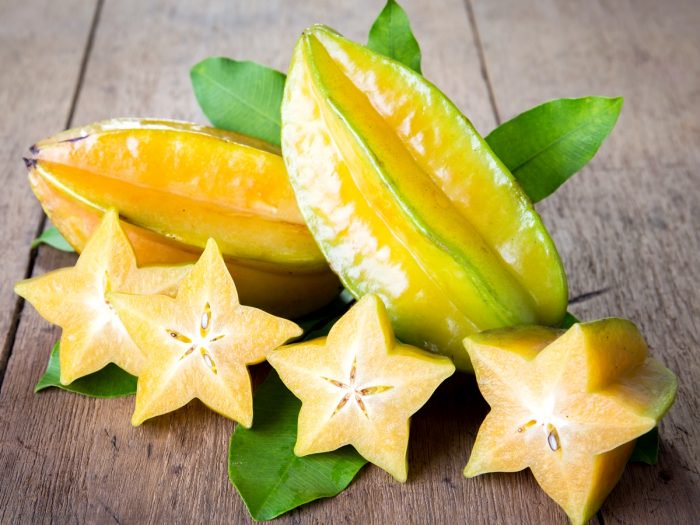
This fruit is also called carambola. It grows between two and six inches in length and has the overall shape of an oval. What makes it peculiar is its shape; the star fruit has five prominent ridges, so when it is cut into slices, it looks like stars. Its skin is fragile and smooth, and it turns a dark yellow color when it’s ready to eat, adding to its cosmic appearance. It is rich in vitamin C, potassium, and antioxidants. Plus, it’s low in sugar and sodium, making it a very healthy snack option. However, there are two types of star fruit. One of them is sweet and can be compared to the flavor of an apple or a grape combination, but the other one is very sour. An easy way to tell which one is which, is that the sweeter version has a thicker skin. It can be eaten as-is or used in juices, salsas, smoothies, or even salads.
Hala Fruit
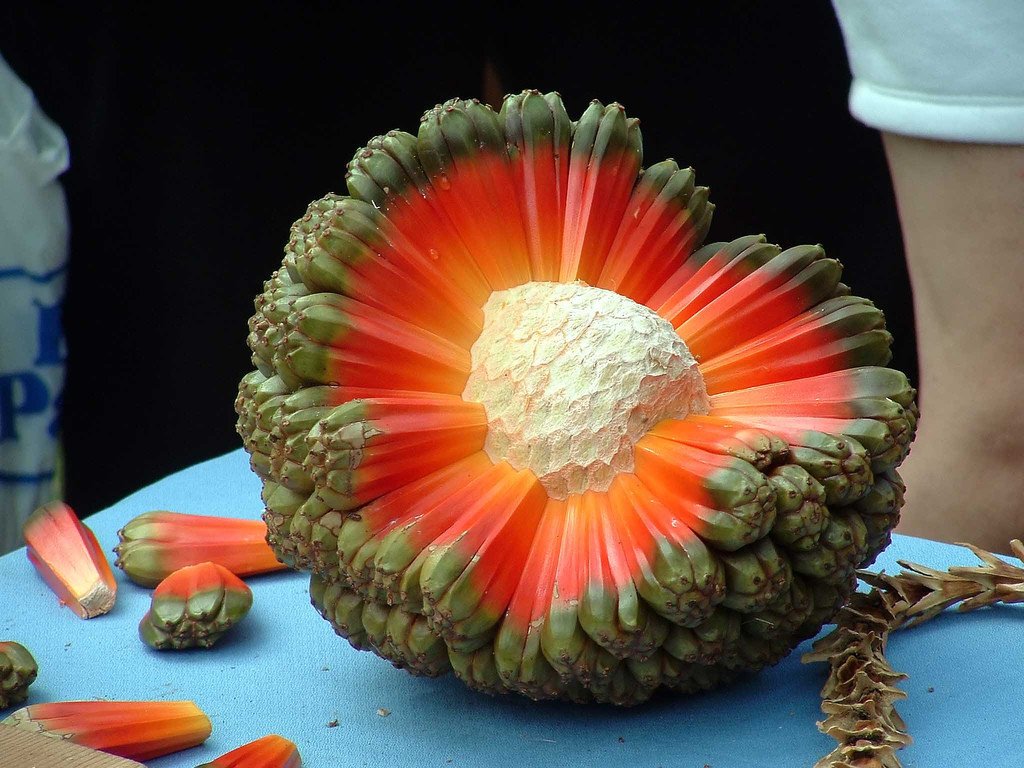
This strange fruit grows on the pandanus tectorius tree. It reaches up to eight inches across and nearly twelve inches long. The hala fruit is made up of several phalanges , also called carpels keys, or cones, that are about eight inches long each. The outside of it is dark green while the inside is bright orange, giving it the appearance of a planetary explosion when the interior is exposed. To eat the fruit, you have to take one of the cones off using something sturdy, like the metal back of a hammer. After that, the rest of them should loosen up for easy removal. You then chew on the center of the key to break down the fibrous material and enjoy the juice that’s on the inside. The taste of the Hala fruit is similar to sugarcane.
Salak Fruit
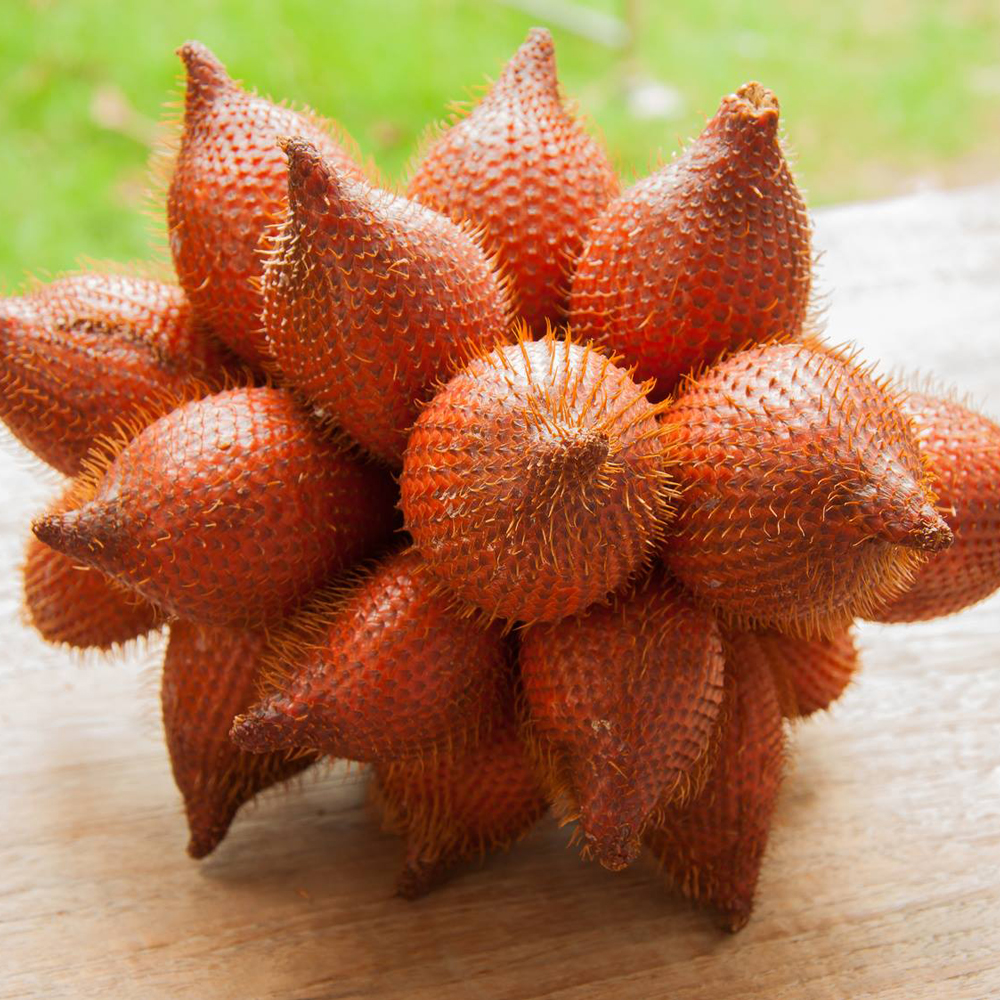
This peculiar fruit has a scaly exterior, similar to that of a snake… so, unsurprisingly, it is sometimes referred to as “snake fruit.” The color of the fruit is a dark brownish-red, which adds to its reptile appearance. They grow in bunches at the bottom of the palm and are pretty small, only reaching to the size of a fig. They are also shaped like a fig with a tapered top and a rounded base. To peel the snake fruit, you pull from the top. The flesh is arranged into three sections and has the appearance and consistency of garlic cloves. The fruit is edible, but the seeds are not. Its flavor is sweet and slightly sour and can come across as a bit harsh. Its texture ranges from dry and brittle to wet and crisp.
Gac Fruit
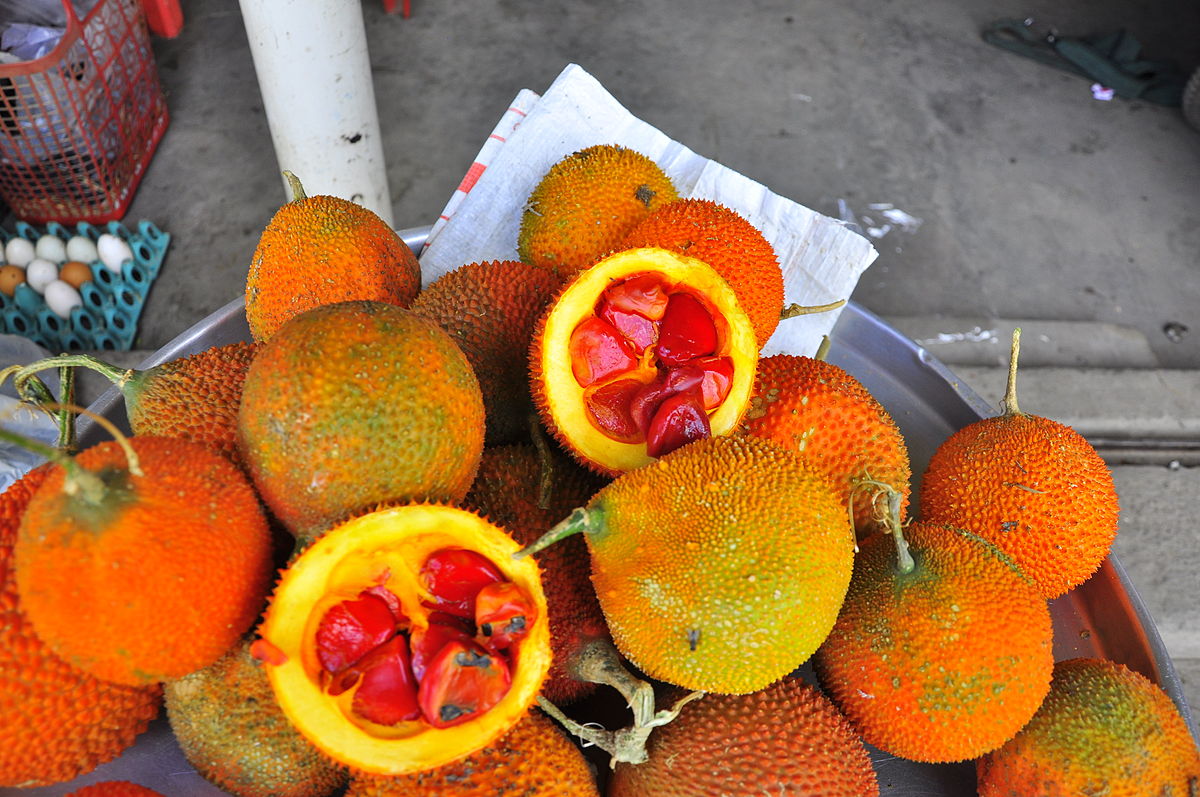
This fruit is found throughout Southeast Asia. It is also called baby jackfruit, sweet gourd, spiny bitter gourd, and red melon. It has a short harvest period, which means it is generally only served on special occasions, such as weddings and the Vietnamese new year. The gac fruit’s color is a big reason why it stands out; it is bright orange-red, and it its exterior is covered in small spikes. The inside of it is crimson-red, reinforcing the fruit’s striking color. The gac fruit has very high levels of lycopene and beta-carotene , which is the reason for its extraordinary hue. It shouldn’t shock anyone that the outside is inedible; so, the flesh within is the only part that can be eaten.
Ackee Fruit
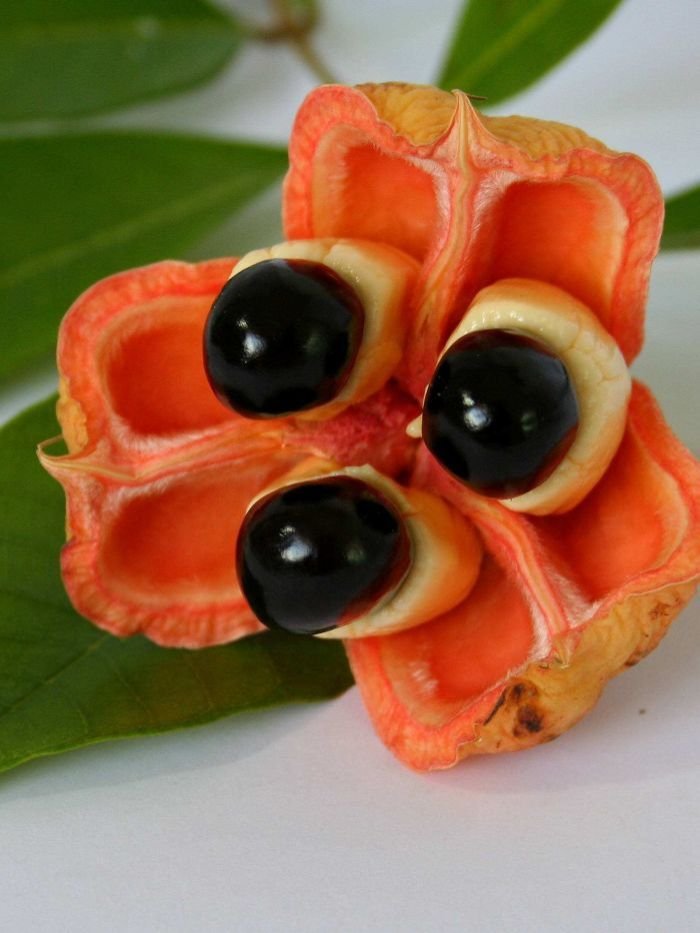
This is Jamaica’s national fruit and is also an essential part of its national dish, ackee and saltfish. Its overall shape is similar to a pear’s, and its color is bright orange. When it ripens, it splits open, exposing its three inner seeds. The seeds are each coated with white-yellow, soft flesh, called the aril. It is often compared to the texture of scrambled eggs. When the fruit isn’t yet ripe, its seeds and arils contain a toxin called hypoglycin If this toxin is consumed, it can lead to Jamaican vomiting sickness; although it usually only causes vomiting, it can become severe and result in seizures, coma, and fatality. However, people continue to brave eating the ackee fruit, and it is one of Jamaica’s major exports. The fruit is canned and sent to other countries, including the United States; even though the seeds are included within the can, the amount of the toxin is within the FDA’s standards.
Breadfruit
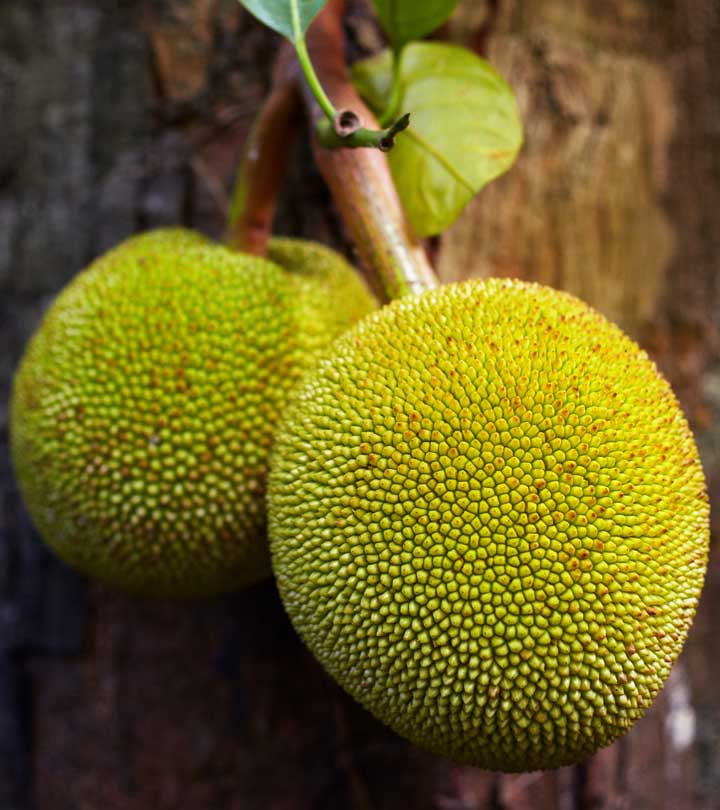
This tropical fruit originated in the Oceania region of the world and is a member of the jackfruit family. It is served as a part of many meals within numerous countries because it is a high-yielding fruit. One tree grows about 200 breadfruits every season. They are roughly the size of a grapefruit and don’t need to be tended to very much. It is bright yellow-green and covered in spikes. Breadfruit is used for cooking when it is both ripe and unripe. It can be prepared in numerous ways, including boiling, frying, roasting, or baking. After it is cooked, it tastes a lot like fresh bread or potatoes, hence its name. If it is consumed raw, it is a good source of vitamin C and also has reasonable amounts of potassium and thiamin.
Miracle Berry
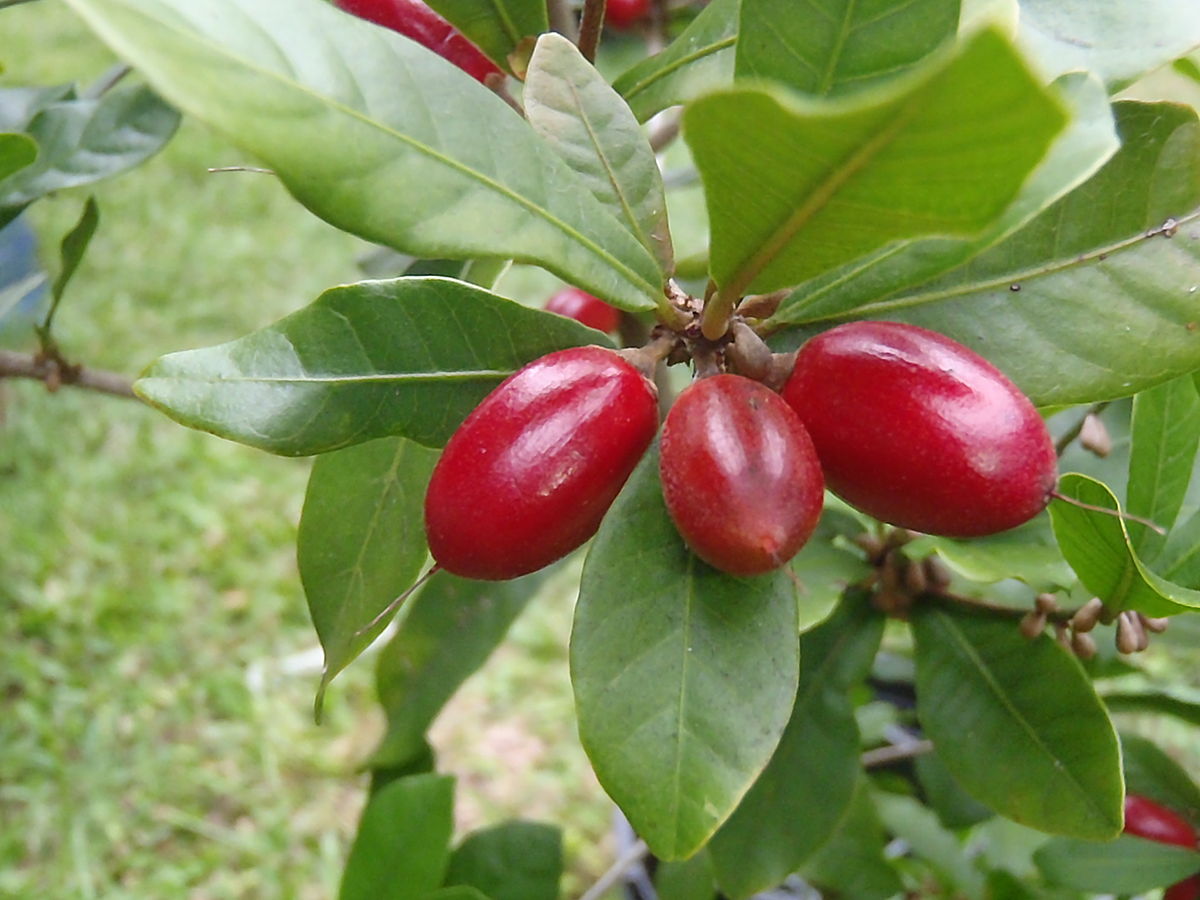
This interesting fruit would amaze just about anybody. Although the berry doesn’t look unique, being about the size, shape, and color of grape tomatoes, what they do is extraordinary; if somebody eats this fruit, then everything they eat afterward tastes sweet. Things that are normally sour or bitter, like vinegar or citrus, don’t have that usual weird aftertaste. This strange effect is caused by miraculin, which was extracted by Professor Kenzo Kurihara and is named after the berry itself. The reason for this reaction isn’t yet known; however, it can last for up to an hour. The miracle berry alone doesn’t taste very sweet; it doesn’t contain much sugar and is slightly tangy. But, if your kids refuse to eat their bitter greens, then feed them this fruit first, and they’ll be enjoying that kale in no time.
Black Sapote
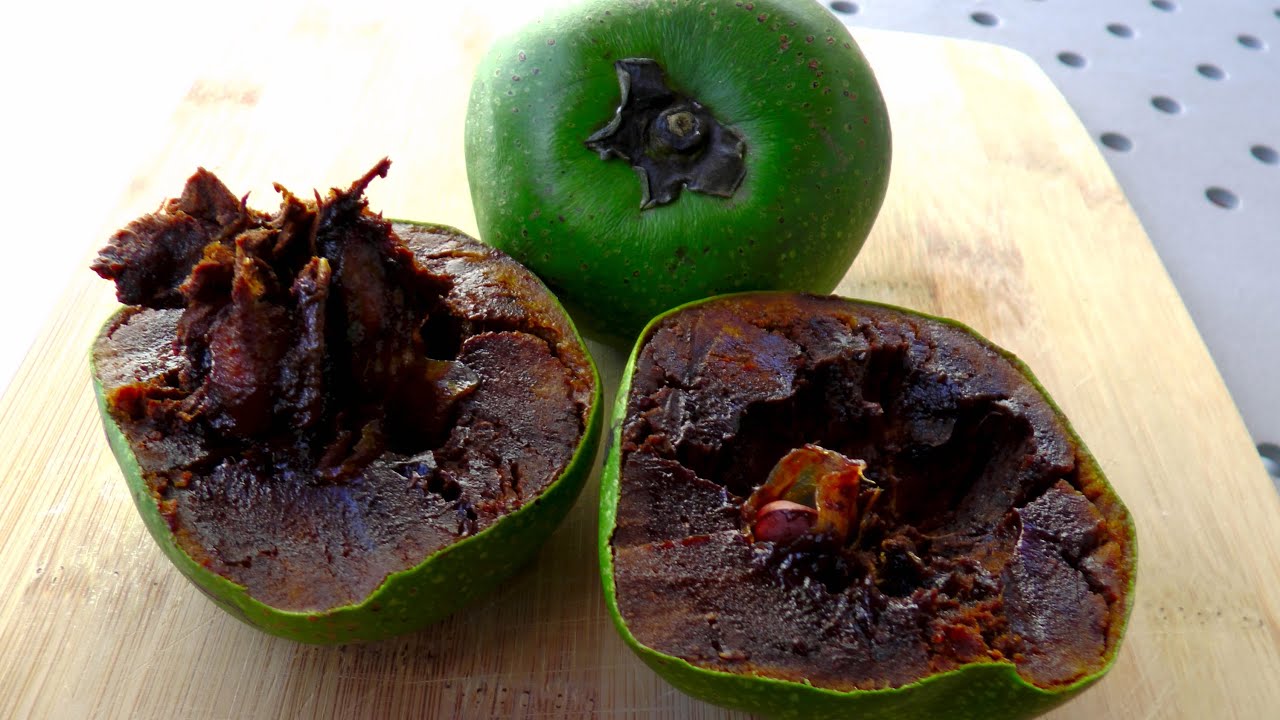
This fruit is similar to a tomato and can grow up to four inches across. This skin can’t be eaten and changes from an olive color to dark yellow-green hue when it is ripe. The inside is white and inedible when the fruit isn’t ripe. However, it changes to a dark brown color when it is ready for consumption; because of this, it is sometimes called the chocolate pudding fruit. The texture is often compared to the delicious dessert as well as the flavor. So, next time you want to put chocolate pudding in your kid’s lunch… maybe trick them into eating some fruit instead.
Durian
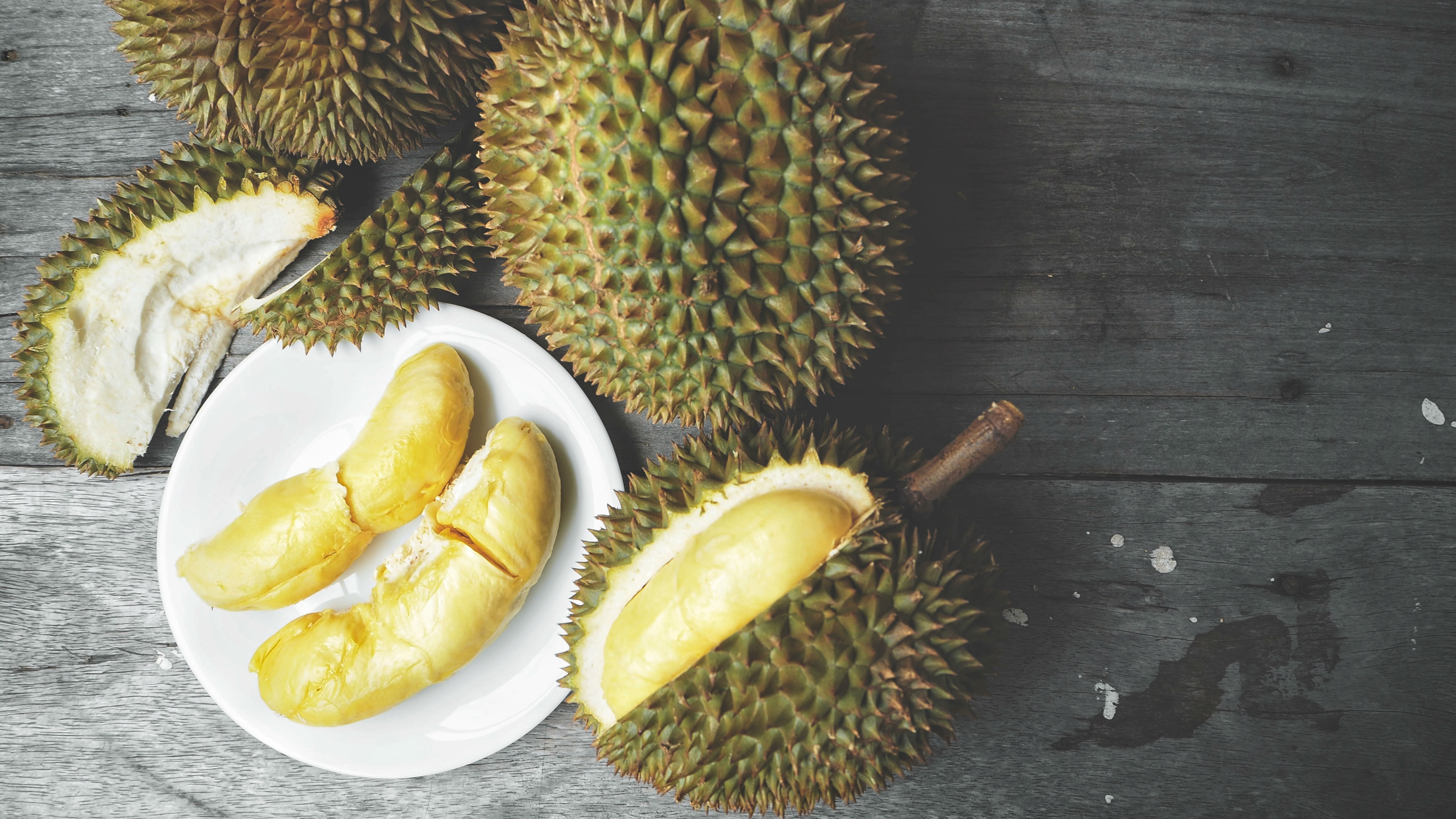
This is perhaps one of the most off-putting fruits known to man. The durian is a giant spiky fruit that grows up to a foot long and six inches across. It is a dark, yellow-brown color and smells about as appetizing as it looks. Due to its overpowering odor and taste, it’s surprising that it is widespread in many dishes in its native countries of Indonesia and Malaysia. Durian is used to make various things like ice cream, candy, and cookies. The flavor of this weird fruit has been compared to many things, including cream cheese, rotting onions, and even almonds. But, what makes it worse is its texture; durian has the consistency of custard. It’s surprising that it is such a common ingredient in desserts since it requires an acquired taste to enjoy. There are even signs on some subway systems that say no durian is allowed on the train because of its pungent scent. However, since it is so widely used in that area of the world, it is only strange to people from other nations.
Wood Apple
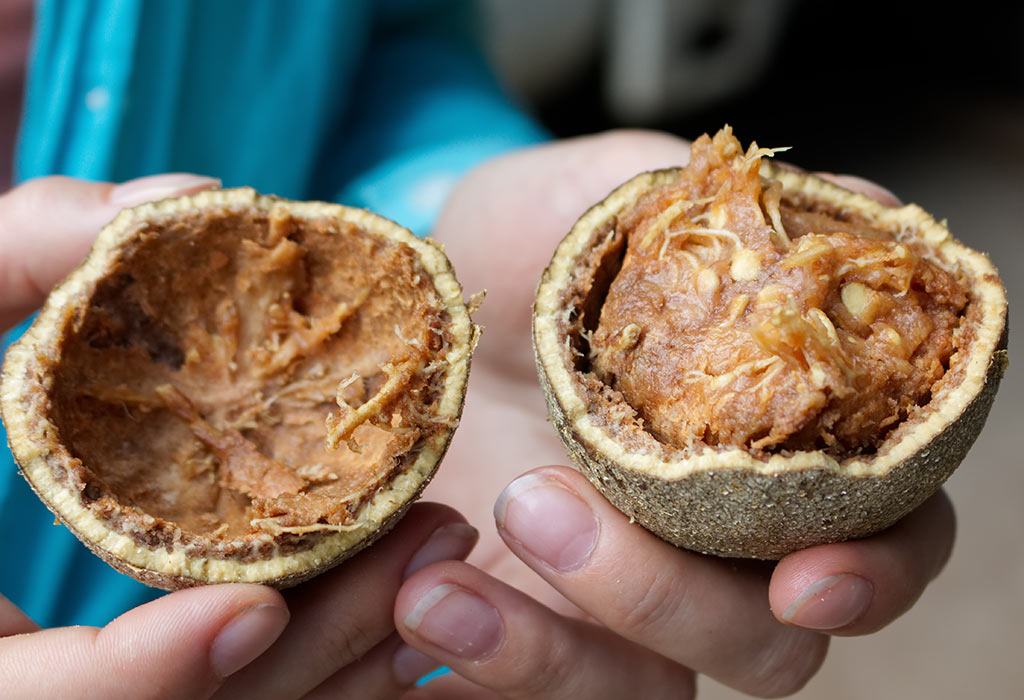
This strange fruit is even weirder than it sounds. The wood apple has an exterior that looks like a coconut growing mold. It grows to about the size of a coconut as well, and its outer shell is very hard. It has to be opened using the back of a knife or by cracking it on the ground. Once the shell cracks and the fruit is opened up, the strange inside is revealed. It has a soft, deep-brown flesh, that looks similar to what you might find in a baby’s diaper; however, the smell is much different. Its scent is aged like raisins and is very strong. Just like durian, the wood apple can smell up an entire room. This fruit is generally used in juices, smoothies, and shakes, and it can also be eaten as-is with a spoon. The wood apple is usually sweet and a bit acidic, so people will sometimes add sugar to even out the tanginess. It also exhibits several textures within the flesh: crunchy seeds and fibrous areas all contained within a smooth, jam-like filler.
Buddha’s Hand
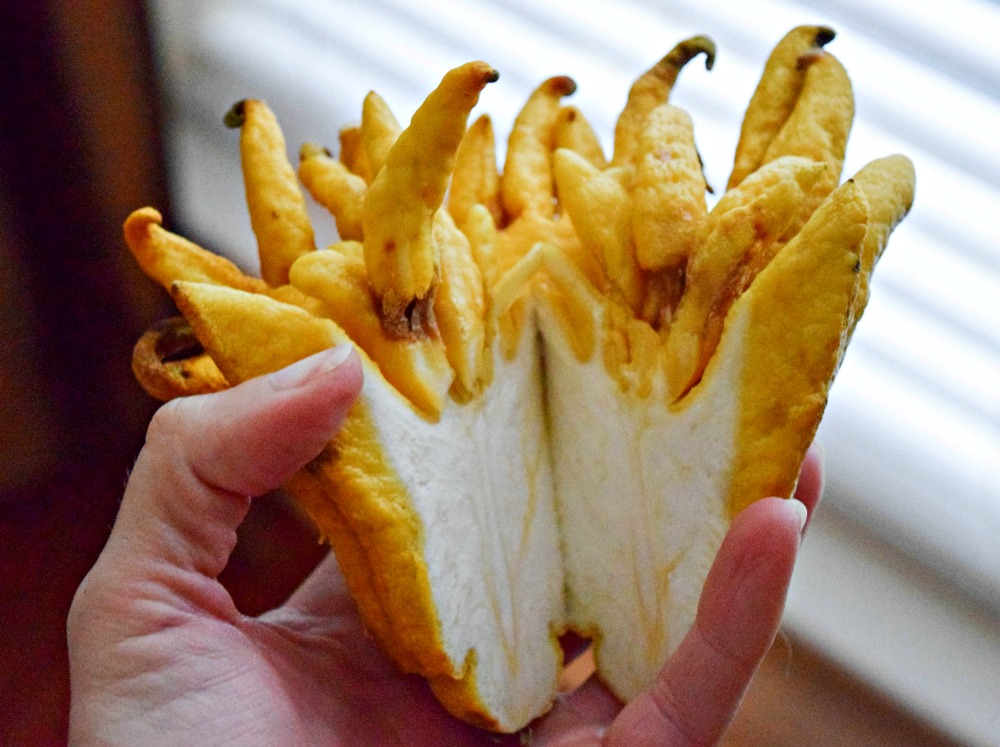
This citrus fruit is very unusual because of its shape. It is called Buddha’s hand because of its long, finger-like extremities. Its appearance can also be compared to an octopus or a squid; it has a round top with several of the oddly-shaped fingers growing out of it. It has a strong scent that is very pleasant, and people in many Asian countries use it to make their houses smell nice and will use it on clothes as well. It is also used as an offering to Buddha; people will place a fruit with a closed hand in a Buddhist temple. Another odd thing about this fruit, besides its shape, is that it doesn’t contain juice or pulp; but, it can be zested, candied, or used in medicinal concoctions.
Rambutan
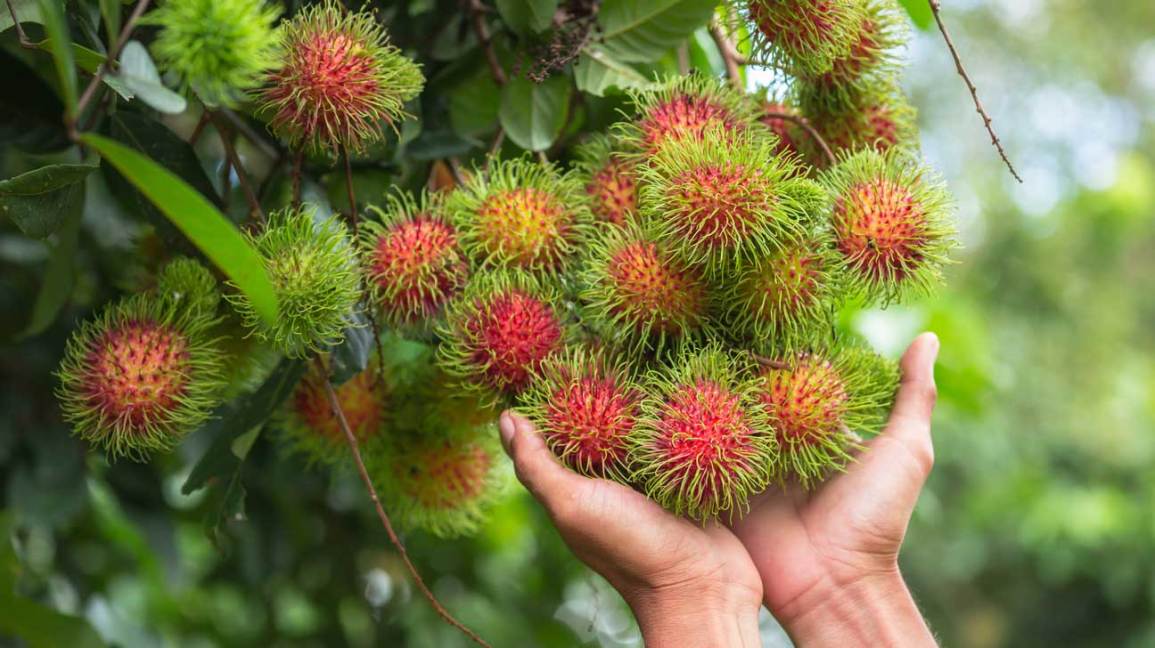
This small, spiny fruit is native to Southeast Asian areas. It is related to various other fruits, including the longan and lychee. Its name, rambutan, comes from the Malay-Indonesian word for “hair,” referring to all of the tiny spines that protrude from its exterior. The outside of the fruit is bright red, and the tips of the spikes are lime-green, enhancing its otherworldly appearance. However, they come in different colors as well, including yellow and green. Although they appear like they might stab you if you hold one, peeling rambutan is very easy; just pinch the fruit until the center skin breaks apart, pull off the exterior, and eat the flesh around the seed in the middle. When you open the rambutan, you might be slightly alarmed because the fruit itself is pure white, contrasting greatly from its skin. This fruit is great to combat various medical issues too. It is high in fiber and aids digestion. It also helps fight infections due to its antiseptic properties, and its high concentrations of antioxidants make it anticarcinogenic and antimicrobial ). It is also known to help get rid of parasites living in a person’s stomach because it acts as an antifungal.




